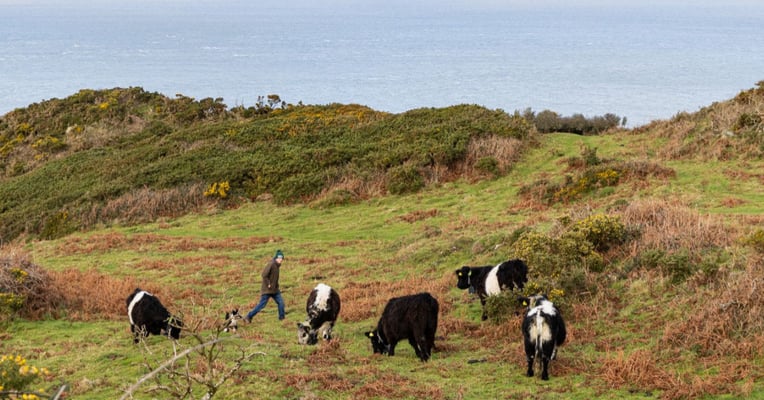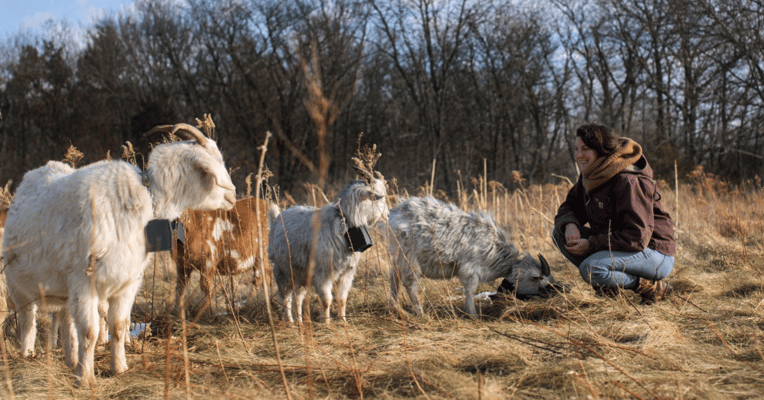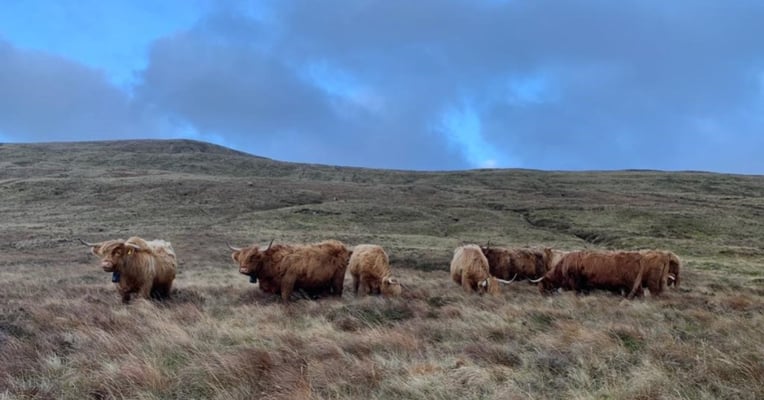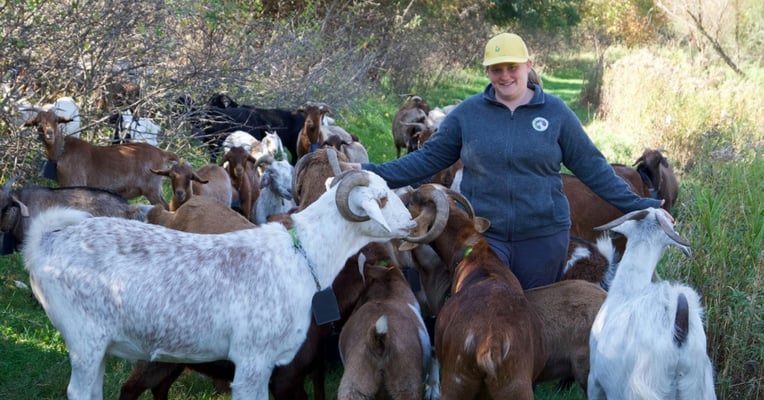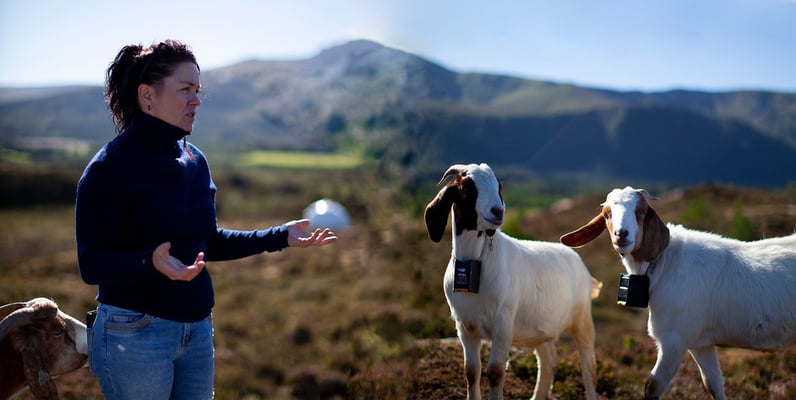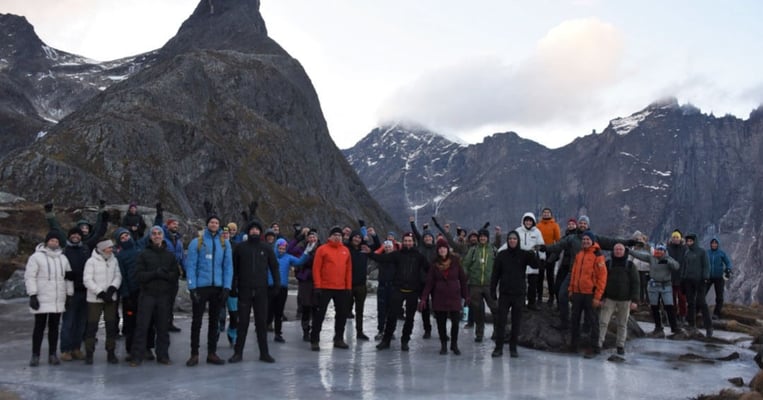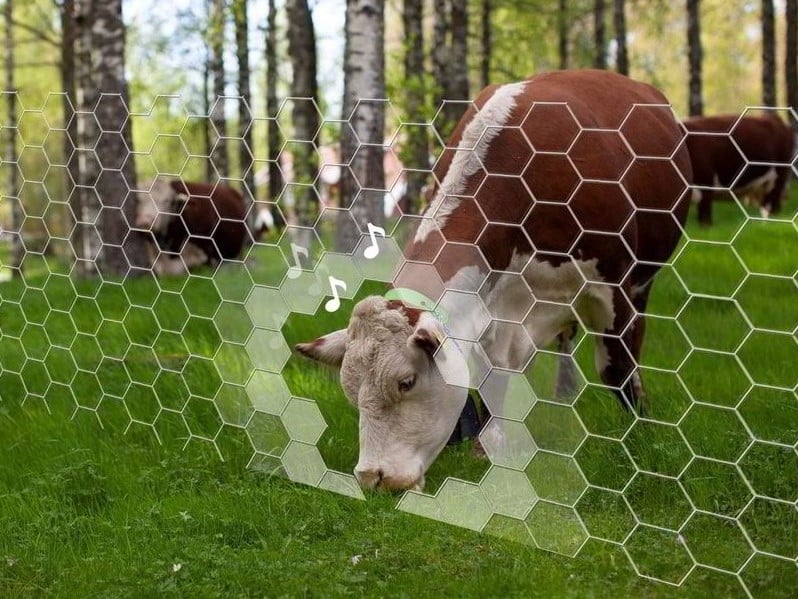
What are the benefits of virtual fencing?
/Philip-Synnestvedt.jpg?width=65&height=65&name=Philip-Synnestvedt.jpg)
The world’s grazing lands are limited, and our natural resources need to be better utilised. However, due to labour-intensive and costly management methods – such as traditional physical fencing – pastures are often underutilized.
Virtual fencing makes it easy to manage livestock in a way that maximises resource use and satisfies animals' natural behavioural needs.
What is virtual fencing?
Virtual fencing is a fencing system that enables livestock to be grazed or moved without using physical, fixed fences. It is predictable to, and quickly learned by, the animals. Audio cues help them know where the fence is and avoid the jolt if they try to breach and graze outside the desired area.
Virtual fencing offers many benefits:
1. More profitable farms
Grazing animals where grass grows is the most cost-effective way to feed livestock. On average, it is ½ the cost of silage and ⅓ the cost of concentrate feed. Because of this, virtual fencing results in more productive and profitable farms since it allows farmers to make the best use of their pastures, with fewer resources.
2. Better pasture management
Virtual fencing gives you more control over your pastures without the hassle of constantly moving physical fences. Creating, adjusting or removing a virtual fence is done remotely via an app. This means you can alter grazing patterns from day to day, enabling animals to move regularly to new pastures as nature intended. Grazing events for each area are recorded in the app, helping you to ensure optimum plant recovery periods are achieved. These benefits mean improved pasture productivity and animal performance without artificial inputs.
3. Enhancing soil health
With virtual fencing, animals are able to graze everywhere on the farm, including the arable land, bringing their fertility directly to new areas in order to kickstart the soil biology. Soil damage is eliminated, even in wet weather, by using the virtual fencing to move animals more often and exclude them from sensitive areas.
4. Conservation grazing
Grazing is often the most effective and natural way to preserve habitats such as natural or semi-natural grasslands, heathlands, wood pasture, wetlands and other habitats, to maintain and increase biodiversity. However, in conservation areas, particularly those with public access, physical fencing is often expensive, impractical or not allowed.
Virtual fencing solves these challenges, permitting controlled grazing when and where it is required whilst excluding animals from sensitive areas. A good virtual fencing solution provides a public access link which allows, at the discretion of the account holder, the ability to view the live location of the animals, meaning members of the public can choose routes which avoid contact if they wish.
5. Targeted grazing / Grazing-as-a-Service
Virtual fencing is ideal for achieving the carefully controlled grazing of livestock to accomplish specific vegetation management objectives. With 24/7 monitoring and highly accurate GPS, animals can be used to prevent wildfires (by reducing fire fuel loads), graze solar parks, prevent vegetation growth beneath power lines, maintain ski slopes, golf courses and much more.
6. Protection of water sources
With virtual fencing, cattle can be excluded from water sources, rivers and lakes. This prevents contamination and erosion without the need for physical fencing, which is a barrier for wildlife and a risk during flooding events.
In addition, virtual fencing can be used to enable animals to be used to manage the riparian zones in a low cost and environmentally friendly way, which provides meat and fibre as a byproduct.
7. Designed for animals' welfare
The use of virtual fencing allows animals to graze outside in an optimal way for them, the soil and the plants. They can be easily excluded from unsuitable or sensitive areas, maximising the land available to them.
Most animals are checked once a day, whereas with a good virtual fencing solution, sensors in the collar monitor animal activity 24/7 and alert the user via the app if they detect anything unusual, which might indicate that an animal is stuck, injured or unwell. Without the time burden of physical fence movement and maintenance, the farmer has more time for observation of the animals and their environment, allowing a proactive approach to welfare. Additionally, virtual fencing is wildlife-friendly, as there is no possibility of entangling or injuring wild animals, permitting free movement across their habitat.
8. Social-psychological benefits
Virtual fencing saves farmers time, which can enable decision making to become proactive rather than reactive. It can also provide peace of mind that animals are well and in the right place, through 24/7 monitoring of each animal. These benefits combined can enable a better work-life balance with more time for family and friends.
Conclusion
Optimising grazing management is a constant challenge for livestock farmers – they must constantly check on or move fences to ensure animals get the nutrition they need, without damaging fragile ecosystems or exposing the animals to unnecessary risk.
By using virtual fencing, farmers can optimise their grazing management whilst reducing the time and cost. Plants and soil can be protected by enabling animals to move regularly as nature intended.
Animals can be utilised in new areas and to perform new services, bringing a plethora of benefits from biodiversity to fire control, all whilst producing meat and fibre.
In summary, virtual fencing enables the optimal management of animals in the landscape, leading to positive solar and water cycles, healthy soils, plants and animals, which in turn provides a sustained and fair profit for the farmer.
